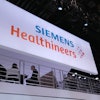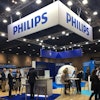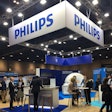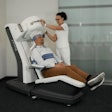
Europe breathed a collective sigh of relief when the U.K. and European Union (EU) finally signed a Trade and Cooperation Agreement on 24 December. The deal agreed has not really done that much to change the short-term picture, but at least it should help to lower the long-term risks.
Now that the dust is starting to settle on the conclusion of the high-stakes political, economic, and regulatory game of chess played by London and Brussels over the past four and a half years, what are the main implications for medical device manufacturers and the imaging sector in particular? These eight key points are worth noting:
- Contingency plans put in place by vendors, the U.K. National Health Service (NHS), and others ahead of the deal being signed are to be kept in place after 1 January 2021 until further notice. It is assumed this will help to mitigate any disruption in the availability of medicines and devices. This should be good news for nuclear medicine and molecular imaging practitioners who are concerned about the supply of radiopharmaceuticals.
- The deal should reduce bureaucracy and paperwork for suppliers bringing goods into the U.K. For instance, it should help to lower the need for EU and U.K. inspections of EU-based manufacturing, because EU certification/inspections should suffice for U.K. import. The situation is less clear for U.K. suppliers, however, with U.K. approved goods only approved for use in the U.K. Products from the U.K. will need to be certified by the EU as well as the U.K.
- Zero tariffs will reduce the risk of price hikes for devices and supplies in the near and middle term, but it is anticipated that vendors will need to swallow administrative costs for additional customs administration. There is some potential for short-term disruption of the supply chain under the new system.
- EU workforce access for radiologists, radiographers, technicians, and others won't immediately change, and the settled status option will continue for those already in the U.K. Future access could be more challenging, however. No additional details or clarity are available yet about the process. Many observers expect the NHS will move to some form of fast-track-type system for required specialist skills.
- The impact on the radiological workforce is unlikely to change drastically in the near term, though more details on settled status and future immigration policy are needed.
- Imaging device/consumables supply: NHS and most vendors have been through pretty extensive contingency, so any delays in customs, etc. will be relatively short term. Any supplies for deals for the first quarter of 2021 will probably have already been shipped pre-Brexit, or stockpiled.
- Regulations: The short-term impact will be relatively mild. The new U.K. regulations now under the control of the Medicines and Healthcare products Regulatory Agency (MHRA) -- the U.K. Conformity Assessed mark (UKCA), a mandatory mark on a product to indicate that it conforms to U.K. legislation -- will mirror the EU's CE mark version initially, and CE marking will also be recognized until June 2023. See Mark Pogose's column for more information.
- Research: the U.K. is to remain part of the EU Horizons program as part of the deal, so this will have a positive impact on U.K. research funding in medical imaging.
Overall then, the biggest unknown is if there will be short-term supply disruption on account of new customs access rules. Also, the precise impact of the deal on workforce issues will become clearer as the 30 June 2021 deadline approaches for the settled scheme for workers.
 Steve Holloway of Signify Research.
Steve Holloway of Signify Research.The long-term risk will be influenced by whether the U.K. and the MHRA decide to dramatically diverge from CE mark regulations and if immigration for EU workers for the NHS (radiologists especially) is not streamlined.
In summary, it is hard to know the exact impact on radiology, given the broader sweeping changes, but it seems likely to be relatively minimal for now. Our team has yet to have any vendors mention any major Brexit-related issues, suggesting that the disruption is likely to be low scale. Most manufacturers are instead focusing on COVID-19 support and other urgent topics.
Steve Holloway is principal analyst and company director at Signify Research, a health tech, market-intelligence firm based in Cranfield, U.K. Competing interests: None declared.
The comments and observations expressed herein do not necessarily reflect the opinions of AuntMinnieEurope.com, nor should they be construed as an endorsement or admonishment of any particular vendor, analyst, industry consultant, or consulting group.



















